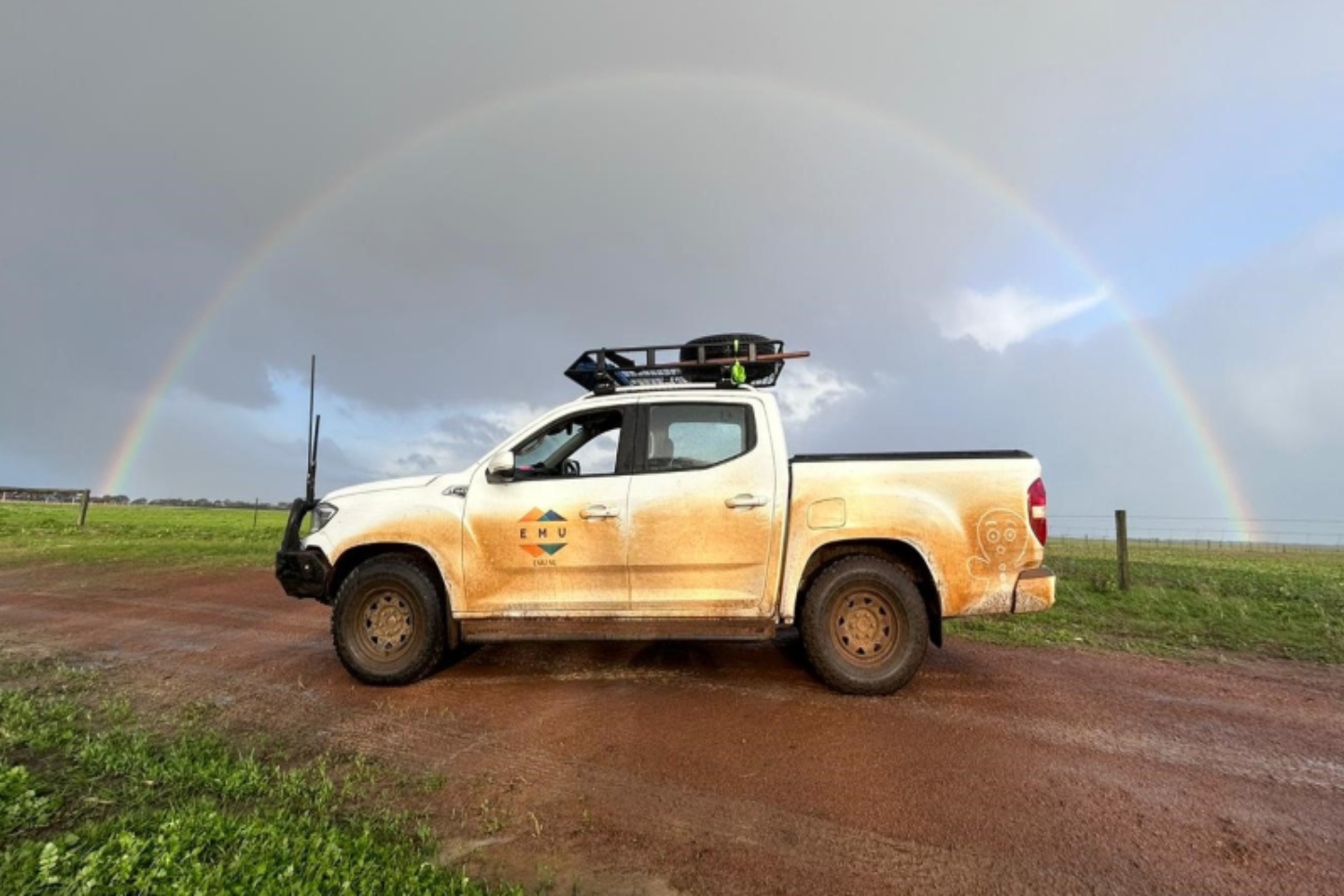Perth-based explorer Emu NL is poised to drill a network of clay-filled, rare earths-prospective channels up to 6km wide and down to 100m in depth at its wholly-owned Condingup project near Esperance on Western Australia’s picturesque south coast. Outcropping source rocks proved fertile and the company plans to drill its clays in September, with assays due in October.

Perth-based explorer Emu NL is poised to drill a network of clay-filled, rare earths-prospective channels up to 6km wide and down to 100m in depth at its wholly-owned Condingup project near Esperance on Western Australia’s picturesque south coast.
The company believes its clays act as a host for rare earths leached from the underlying and fertile Booanya granite intrusions that conveniently outcrop in the area and which it sampled earlier this year. All three samples from the granites returned hits for rare earths, with results ranging between 1142 parts per million total rare earth oxides (TREO) and 2124ppm TREO, with magnetic rare earth oxides (MREO) making up about a quarter of the TREO.
Bolstered by its promising initial results, Emu is now searching for the clay hosts that are generally considered to be a cheaper bulk mining proposition because of their relatively simple extraction process compared to other hard-rock rare earths deposits and which have proven prospectivity in the Esperance area.
Using passive seismic survey, a non-intrusive geophysical method that utilises natural sources of sounds and buried sensors to image subsurface density variations, the company now has a picture of the base of the clay hosts, which it says take on a channel form.
The resulting dataset imaged a vast network of wide, clay-filled channel bodies ranging from about 3km to more than 6km wide and between 20m and 100m in depth. The biggest channel is near the eastern edge of the company’s land package and remains open to the east, north and south.
Emu has successfully used passive seismic surveys in the past at three of its other rare earths discoveries in WA – Viper, Graceland and Merredin. With a target-rich environment now established, a maiden 3000m air-core (AC) drilling program is planned to kick off in September, with assays due back in early October.
The program will target the widest channel form in the east of the area, with drill collar locations planned along the seismic line to allow effective ground-truthing of the geophysical dataset and an accurate time-to-depth conversion.
Emu NL chairman Peter Thomas said: “EMU’s Passive Seismic Survey programme, which was conducted over our WA-based REE discovery projects, has provided us with resounding success, adding to the weight of evidence supporting EMU’s conceptual modelling for potential REE clay trap hosted zones at each of the projects. The surveys have provided us with walk up drill targets at all of our REE projects. The Board has requested an immediate air-core drilling programme to test the clay hosted REE enrichment at Condingup.”
In what is fast becoming the State’s rare earths hotspot, Emu is one of several companies actively exploring in the Esperance area. Of note, OD6 Metals has had recent success about 150km to the north-east of Emu’s land, after drilling results at its Splinter Rock project turned some heads.
OD6 assays came back with impressive TREO concentrations up to a whopping 6605ppm. Some of the best assays include 69m at 1483ppm TREO with 21.1 per cent MREO from 24m and 66m at 1516ppm TREO with 20.2 per cent MREO from 15m.
On the back of its drilling campaign, OD6 announced a maiden mineral resource estimate for Splinter Rock of 344 million tonnes at 1308ppm TREO at a 1000ppm cut-off grade, with high-value MREO making up about 23 per cent of the TREO grade.
The geologic model at Splinter Rock is comparable to that used by Emu for its Condingup project – targeting the clay-rich weathered profile adjacent to the rare earths-fertile Booanya granite intrusions.
The company says TREO enrichment within the clays is at its highest near the flanks of the underlying Booanya granite bedrock. It has pegged all of the ground where the granite bedrock contacts the clays and believes it has a strong chance of making a similar-sized rare earth discovery to OD6.
Esperance rare earths deposits are virtually identical to those in China, which holds the majority of the world’s resources at about 44 million tonnes. In 2021, China produced 168,000 tonnes of rare earths oxide equivalent – almost four times more than the world’s second-biggest producer, the United States, which pumped out 43,000 tonnes.
Federal Resources Minister Madeleine King says Australia is already the fourth-biggest producer of rare earths concentrate and has the potential for significant growth given the country’s high-quality deposits of both light and heavy rare earths.
Emu has established a strong foothold on prospective ground with some big-hitting neighbours and the market will no-doubt be eagerly awaiting the results of the company’s upcoming drilling campaign.
Is your ASX-listed company doing something interesting? Contact: matt.birney@businessnews.com.au
















